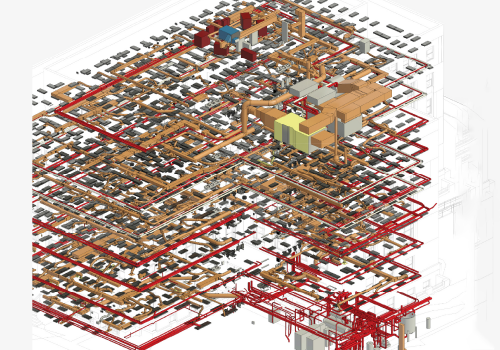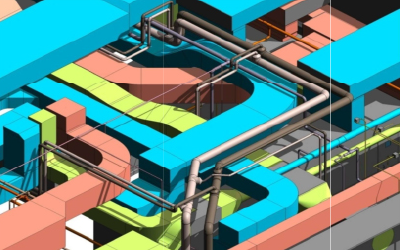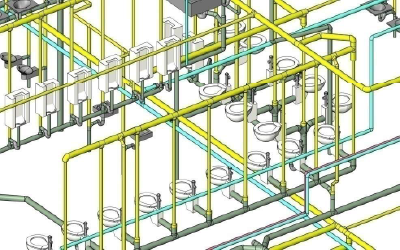Renowned Standing
Due to the skills we uphold, both large and small roll-out firms want to benefit from our knowledge and expertise.
Started in 2009, Gsource covers various MEPF Architectural Design Services, thoughtfully tailored to our esteemed clients' specific requirements in United States and Canada. Also, we assure maximum vertical accuracy, the best quality & full linework with a 24-hour turnaround time for selected projects for our clients. Our ability to stay ahead of the curve in these rapidly developing industries has allowed us to assist our clients in securing a niche market position.
14+
Years of Experience
300+
Team of Experts
800+
jobs delivered daily
360+
Active Clients
MEPF Architectural Design is to include the designs of your Mechanical, Electrical, Plumbing, Fire Protection & HVAC systems to existing and new structures designs. To create safe & functional buildings we need these designs to be precise & accurate. At Gsource we provide professional MEPF modeling and design services to identify hurdles, prevent extra costs, eliminate mistakes & ensure punctual delivery.
Our services align with international standards like IEEE, SMACNA, NFPA & ASHRAE. This guarantees better and more modern MEPF & HVAC system designs for your new and existing structure designs.



Permit sets or approval sets are the designs, models, presentations, or drawings made by the designer for the buyers and government to approve the design of a project. Now, MEP permit sets are the Mechanical, Electrical, and Plumbing approval design sets for a given project. These sets include the design and outline of the cooling, heating, smoke control, kitchen equipment, duct layout, energy consumption calculations, switch outlets, transformers, switch gears, and other electrical connections, fire sprinkler systems, drainage, gas pipes, water consumption, and more such plumbing and mechanical related connections.
The permit sets were to be created after meeting and understanding the client’s requirements and a thorough on-site inspection of the property. Also, these designs were made according to the wish of the client and the permissions allotted by the state/country. Now, all this data was carefully collected from the client and the government, and then the designs and layout plans were curated for the buyer.
The client specifically required the MEP permit set for a single-family residential place. These permit sets were of utmost importance because of the drainage system you use, the outlet of the wastewater, the electric consumption by the house, and other things that affect the individual as well as the neighborhood. That is why a detailed MEP permit set was to be made using the CAD software. Thus, all these were provided to the client as per the requirements.
The information given by the client lacked the existing connections and the services information for the MEP permit set to be made. The information given by the client also lacked some of the precise locations of the site components.
These precise locations, connections, service information, and existing connections help in making a better design and permit set for the project, and due to the incomplete information from the client, these challenges were faced.
After concluding on the precise information from the client, some of the information was to be collected from Google Maps for the precise location of the site components. Google Maps were also used for the services available at that time. If the information from Google Maps could not be received, the client was asked for the same. After getting the information from the client, more required information, and assumptions were to be made based on the current information.
This was the solution rooted in the development of MEP permit sets for the client as per the requirements and permissions from the government. All this information was then conclusively used to make the MEP report. After the making of the permit set, a thorough quality check was conducted to ensure that the correct report was made.
As a result, after the final QC from the experts, the permit sets were sent to the clients and approved on the same. These were then used further for construction purposes.
Permit sets or approval sets are the designs, models, presentations, or drawings made by the designer for the buyers and government to approve the design of a project. Now, MEP permit sets are the Mechanical, Electrical, and Plumbing approval design sets for a given project. These sets include the design and outline of the cooling, heating, smoke control, kitchen equipment, duct layout, energy consumption calculations, switch outlets, transformers, switch gears, and other electrical connections, fire sprinkler systems, drainage, gas pipes, water consumption, and more such plumbing and mechanical related connections.
The permit sets were to be created after meeting and understanding the client’s requirements and a thorough on-site inspection of the property. Also, these designs were made according to the wish of the client and the permissions allotted by the state/country. Now, all this data was carefully collected from the client and the government, and then the designs and layout plans were curated for the buyer.
The client specifically required the MEP permit set for a single-family residential place. These permit sets were of utmost importance because of the drainage system you use, the outlet of the wastewater, the electric consumption by the house, and other things that affect the individual as well as the neighborhood. That is why a detailed MEP permit set was to be made using the CAD software. Thus, all these were provided to the client as per the requirements.
The information given by the client lacked the existing connections and the services information for the MEP permit set to be made. The information given by the client also lacked some of the precise locations of the site components.
These precise locations, connections, service information, and existing connections help in making a better design and permit set for the project, and due to the incomplete information from the client, these challenges were faced.
After concluding on the precise information from the client, some of the information was to be collected from Google Maps for the precise location of the site components. Google Maps were also used for the services available at that time. If the information from Google Maps could not be received, the client was asked for the same. After getting the information from the client, more required information, and assumptions were to be made based on the current information.
This was the solution rooted in the development of MEP permit sets for the client as per the requirements and permissions from the government. All this information was then conclusively used to make the MEP report. After the making of the permit set, a thorough quality check was conducted to ensure that the correct report was made.
As a result, after the final QC from the experts, the permit sets were sent to the clients and approved on the same. These were then used further for construction purposes.
The project was received from LA for revising the existing CAD design plan from a plumbing design-build contractor. The contractor provided us with the CAD design plan and asked us to revise it as the original design had many errors with the calculations, sizing, code compliance, and more.
We did receive some basic designs and information from the client on the same along with the required on-site survey for corrections in the error. Thus, this was to be revised accordingly.
The vast area to focus on in this project was the revision of the given design from the client. It was to be thoroughly studied and then rectified accordingly. We needed to create new design layouts while making sure they matched the architectural designs. Along with this, it was to be made sure that the California Plumbing Code and the National Plumbing Code were followed and complied within the designs. Also, preparing shop drawings and cut sheets for fittings from the BIM model was a requirement of the project. All this was to be made according to the inputs provided by the client.
As CAD is a highly design-oriented software, those with no background knowledge were not able to understand the design idea and the concept behind the project. The design concepts, ideas, and solutions were tough to explain to those with non-technical and non-visual backgrounds. Another challenge was coordination between the client and the team. Due to low coordination, the time consumed was more, there were minor errors arising while designing and reviewing, and more.
This was overcome by using the updated CAD models and experienced CAD Drafters were made to work on those files. Tools were used to verify and check the quality of the work delivered. Also, reviews from experts were taken before delivering the final files to the client. After the complete designing and quality checking of the final drawings and layouts, the designs and layouts were delivered to the clients.
The results obtained were the clear and revised CAD designs of the layouts provided. After the complete QC and reviews from the experts, the new layouts were shared and approved by the clients.
The project was received from LA for revising the existing CAD design plan from a plumbing design-build contractor. The contractor provided us with the CAD design plan and asked us to revise it as the original design had many errors with the calculations, sizing, code compliance, and more.
We did receive some basic designs and information from the client on the same along with the required on-site survey for corrections in the error. Thus, this was to be revised accordingly.
The vast area to focus on in this project was the revision of the given design from the client. It was to be thoroughly studied and then rectified accordingly. We needed to create new design layouts while making sure they matched the architectural designs. Along with this, it was to be made sure that the California Plumbing Code and the National Plumbing Code were followed and complied within the designs. Also, preparing shop drawings and cut sheets for fittings from the BIM model was a requirement of the project. All this was to be made according to the inputs provided by the client.
As CAD is a highly design-oriented software, those with no background knowledge were not able to understand the design idea and the concept behind the project. The design concepts, ideas, and solutions were tough to explain to those with non-technical and non-visual backgrounds. Another challenge was coordination between the client and the team. Due to low coordination, the time consumed was more, there were minor errors arising while designing and reviewing, and more.
This was overcome by using the updated CAD models and experienced CAD Drafters were made to work on those files. Tools were used to verify and check the quality of the work delivered. Also, reviews from experts were taken before delivering the final files to the client. After the complete designing and quality checking of the final drawings and layouts, the designs and layouts were delivered to the clients.
The results obtained were the clear and revised CAD designs of the layouts provided. After the complete QC and reviews from the experts, the new layouts were shared and approved by the clients.
Roads and sidewalks are crucial parts of Civil Engineering when designing transportation paths. This ensures smooth and safe travel and transportation. Civil 3D has made this design process easier for engineers.
This project focused on expanding the busy city highway to handle the increasing traffic. It included making the current lanes wider, adding new ones, and including pathways for cyclists and pedestrians. The goal was to minimize costs and environmental impact while maximizing efficiency.
We came across the following challenges during the project -
The project was completed and delivered using Civil 3D’s features and other resources to design the road corridors.
Roads and sidewalks are crucial parts of Civil Engineering when designing transportation paths. This ensures smooth and safe travel and transportation. Civil 3D has made this design process easier for engineers.
This project focused on expanding the busy city highway to handle the increasing traffic. It included making the current lanes wider, adding new ones, and including pathways for cyclists and pedestrians. The goal was to minimize costs and environmental impact while maximizing efficiency.
We came across the following challenges during the project -
The project was completed and delivered using Civil 3D’s features and other resources to design the road corridors.
Your Project is Ready in 4 Easy Steps
Due to the skills we uphold, both large and small roll-out firms want to benefit from our knowledge and expertise.
We use high-tech solutions to understand the design and construction requirements for the MEPF Architectural CAD design & drafting.
We have an R&D team that can handle the vast data collection, which can feel like a task for other companies.
Timely actions and efficient outputs minimize delays, maximize productivity & ensure prompt MEPF architectural design and drafting services for our clients.
The data used by us for creating topographic maps, volume calculations & distance measurements provides results to the point.
The experience that our team holds is what sets us apart. With the training programs, our team of 300 members can deliver top-tier results laid over a 30,000-square-foot Class A Office space.
We are active members of national and international surveying, architectural, engineering & geospatial organizations.
As a service provider, we’ve supported and served companies across the US. Our dedication produces excellent quality that propels industry success.
We serve different MEPF services like Air Duct Diagrams, Earthing & Grounding Systems, Medical Gas & Compressed Air Piping Design, Smoke Management Systems, Lift Well and Stairwell Pressurisation Systems & more. There are a lot of other services that we provide depending on requirements from clients.
The time required to complete a specific project depends on various factors, specific client requirements, building or structure size, resource availability & others.
Yes, HVAC is a part of Mechanical systems of design being made. It covers the heating, ventilation & air conditioning systems of your structure.
To design MEPF disciplines, major challenges could be coordination with other disciplines, making designs sustainable, obedience to building codes and regulations & space issues for systems.
MEPF systems or disciplines contribute to sustainability by installing plumbing fixtures that save water, energy-efficient HVAC systems & advanced fire protection systems.
(Enter captcha image text in box)
At Gsource Technologies, we’re ready to help! Tell us what you need, and we’ll connect you with the right experts.